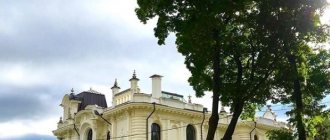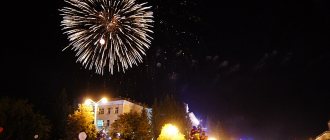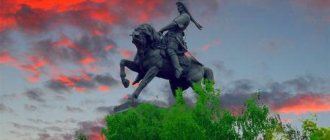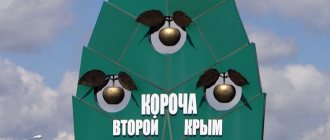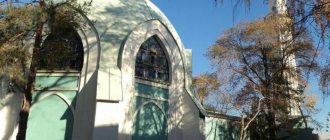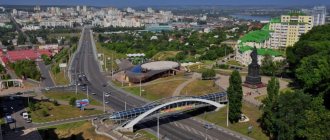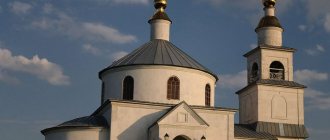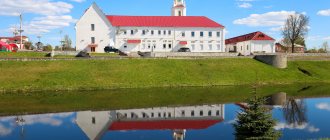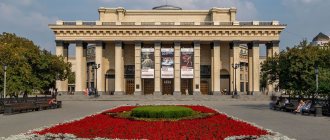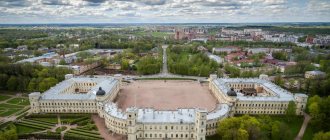The region, which is considered agricultural, is sometimes seen as an eco-tourism center. The historical monuments of the Belgorod region are so interesting that they can attract tourists from all over Russia. Moreover, ethnotourism can be developed here to introduce travelers to the culture and customs of the region. Finally, there are also interesting natural places. In short, you just need to draw up your travel route in advance and mark on the map all the destinations you plan to visit.
general information
Although this region was officially formed only in 1954, in reality these lands have always been Russian in one way or another. The first mentions of settlements in those places of the Central Russian Upland date back to the 8th century, but practically nothing has survived from those times, since this area suffered greatly from the Mongol-Tatar invasion.
During the Great Patriotic War, the legendary Prokhorov tank battle took place here. So in every guidebook you can find many monuments dedicated to these particular events.
When considering the sights of the Belgorod region, it is worth starting from the capital of this region itself. The administrative center of the region is the city of Belgorod, 40 km from which there is the border with Ukraine. The city itself is home to about 390 thousand people. But if we also take the urban district, then the total population exceeds 500 thousand people. There are many telecom operators in the area.
The first settlement on the site of Belogorod appeared in the 8th century. It is believed that it was founded by a tribe of northerners. But it is officially believed that the city itself was founded only in the 16th century, when the Belgorod fortress was built on this site (unfortunately, it has not survived to this day). Some believe that in those days the city was called Belek. But this is just confusion with a similar name of a Turkish city. The fortress stood on a chalk hill, and it was called the White City.
If a tourist is interested in the historical places of the Belgorod region, then they need to start with Belgorod itself:
- Its temples deserve special attention. The oldest of them is the Assumption-Nicholas Cathedral. It was built in 1703 and completely restored in this century, so that today tourists can admire this beautiful temple.
- Almost the same age (by historical standards) of this building are the Church of the Intercession, St. Joasaph and Smolensk Cathedrals. But the beautiful church was built a century later.
The city has preserved many beautiful examples of secular architecture. A walking tour around Belgorod is a great way to get to know them. For example, you can inspect:
- merchant mansions;
- hotels;
- other pre-revolutionary buildings.
After exploring the sights of Belgorod, you can go to those objects that are located outside the city.
Monuments of history and culture
MEMORABLE OBJECTS
Bust of Army General N.F. Vatutina The monument was erected at the intersection of Vatutina Avenue and Korolev Street. Opened on May 6, 1965. Nikolai Fedorovich Vatutin (1901–1944) - Soviet military leader, army general, Hero of the Soviet Union, native of the village of Chepukhino, Voronezh province (now the village of Vatutino, Valuysky district, Belgorod region). Participated in the Civil War. During the Great Patriotic War he was chief of staff of the North-Western Front, commanded the Voronezh, South-Western, and 1st Ukrainian fronts. During the Battle of Kursk, he commanded the troops of the Voronezh Front and took a direct part in the development of the Kursk strategic defensive operation. In February 1943 he was wounded and died on April 15 in a Kiev military hospital. In 1965, N.F. Vatutin was posthumously awarded the title of Hero of the Soviet Union.
Monument to M.S. Shchepkin The monument was erected near the building of the Belgorod State Academic Drama Theater named after M.S. Shchepkina in 1998. Initially, in 1988, the monument was erected near the Smolensk Cathedral, in honor of the 200th anniversary of the actor’s birth. Ten years later, it was moved and installed near the theater that bears his name. Shchepkin Mikhail Semenovich (1788–1863) - an outstanding Russian actor, the founder of realism in Russian stage art, a native of the village. Krasnoye, Kursk province (now the village of Krasnoye, Yakovlevsky district, Belgorod region). The authors of the monument are sculptors V.M. Klykov, A.A. Shishkov, architect S. M. Mikhalev.
Monument to S.A. Degtyarev Monument is located on Grazhdansky Avenue in front of the building of the Music College named after. S.A. Degtyarev Belgorod State Institute of Arts and Culture. Opened in 1994. Stepan Anikievich Degtyarev (1766–1813) is a famous Russian composer, conductor and vocalist, a native of the Borisovka settlement, Belgorod province. The authors of the monument are sculptors A.S. Smely, M.A. Bold, architects V.V. Pertsev, Yu.A. Veretelnikov.
Monument to those killed in Afghanistan The monument is located on the Museum Square of the city of Belgorod between the Belgorod State Museum of History and Local Lore and the Belgorod State Historical and Art Museum-Diorama “Battle of Kursk. Belgorod direction". Opened on February 18, 1995. The monument perpetuates the memory of Belgorod residents who died in Afghanistan between 1979 and 1989. The authors of the sculptural composition are sculptor A.A. Shishkov, architect V.M. Galai.
Monument to the Holy Equal-to-the-Apostles Prince Vladimir - the Baptist of Russia. Located on Kharkov Mountain next to the highway connecting the left and right banks of the Seversky Donets. Opened on August 4, 1998. Vladimir Svyatoslavich (960–1015) - Prince of Novgorod, Prince of Kiev, under whom the Baptism of Rus' took place. The monument is made of copper using the knockout technique at the Kaluga Sculpture Factory. Consists of three pictorial tiers. The lower one is formed by four six-figure reliefs (24 figures in total), the second - by three single-figure reliefs, and on the third tier there is a figure of Prince Vladimir. The height of the monument from the surface of the earth is 22.5 meters, of which 15 meters is the pedestal and 7.5 meters is the sculpture of Prince Vladimir. The authors of the monument are sculptor V.M. Klykov, architect V.V. Pertsev.
Monument to the “Victims of Chernobyl” The monument is located on B. Khmelnitsky Avenue, next to the Belgorod Industrial College. The monument was erected in 1998 in memory of Belgorod residents - liquidators of the consequences of the Chernobyl nuclear power plant accident in 1986. The author of the monument is sculptor A.A. Shishkov.
Bust of Marshal I.S. Konev The monument was erected in Belgorod on I.S. Konev Street in 1998. Ivan Stepanovich Konev (1897 - 1973) - an outstanding military leader, Marshal of the Soviet Union, twice Hero of the Soviet Union. In July 1943, I.S. Konev commanded the troops of the Steppe Front, at the head of which he managed to achieve success in the Battle of Kursk, in the Belgorod-Kharkov strategic offensive operation “Rumyantsev” and in the battle for the Dnieper. In August 1943, the troops of the Steppe Front under the command of I.S. Konev was released from Belgorod. The author of the monument is sculptor A.S. Brave.
Chapel-rotunda in honor of the 2000th anniversary of the Nativity of Christ The chapel-rotunda was erected at the northern entrance to the city of Belgorod on the Moscow-Simferopol highway. Opened and dedicated on January 7, 2000. Inside the rotunda there is a statue of an angel who “meets and blesses” everyone entering the city. The authors of the project are architect A.N. Bersenev, sculptor A.A. Shishkov.
Alley of Heroes of the Soviet Union and Heroes of Russia Alley of Heroes in Victory Park in Belgorod was opened and consecrated on May 8, 2001. On the alley there are busts of 18 Heroes of the Soviet Union and 5 Heroes of Russia from Belgorod: - Hero of Russia Burtsev V.V. (2001, author – sculptor D.F. Gorin); — Hero of the Soviet Union Limansky K.A. (2001, author - sculptor A.S. Smely); — Hero of the Soviet Union Tyusin N.M. (2001, author – sculptor A.A. Pshenichny); — Hero of the Soviet Union Khromykh V.P. (2001, author - sculptor M.A. Smely); — Hero of the Soviet Union Tikhonov N.I. (2001, author - sculptor M.A. Smely); — Hero of the Soviet Union Orlov A.I. (2001, author – sculptor D.F. Gorin); — Hero of the Soviet Union Lukinova N.T. (2001, author – sculptor A.A. Pshenichny); — Hero of the Soviet Union Kramchaninov I.P. (2001, author - sculptor A.A. Shishkov); — Hero of the Soviet Union P.P. Zyubin. (2001, author - sculptor A.A. Shishkov); — Hero of the Soviet Union Kononenko N.N. (2001, author - sculptor A.S. Smely); — Hero of the Soviet Union Denisov V.N. (2001, author - sculptor A.A. Shishkov); — Hero of the Soviet Union Besedin N.F. (2001, author - sculptor A.A. Shishkov); — Hero of Russia Zuev D.S. (2002, author - sculptor A.S. Smely); — Hero of the Soviet Union Gostishchev P.M. (2002, author - sculptor D.F. Gorin); — Hero of the Soviet Union Mazikin E.I. (2002, author - sculptor M.A. Smely); — Hero of the Soviet Union Moskalev D.E. (2002, author - sculptor D.F. Gorin); — Hero of the Soviet Union Filatov V.R. (2002, author – sculptor A.A. Pshenichny); — Hero of the Soviet Union Trainin P.A. (2005, author – sculptor O.N. Trofimenko); — Hero of Russia Barkovsky V.B. (2005, author - A.S. Smely); - Hero of the Soviet Union Shelomtsev N.G., (2008, author - sculptor A.A. Pshenichny); — Hero of the Soviet Union Levin G.T. (2009, author – sculptor M.A. Smely); — Hero of Russia Chumak Yu.A. (2017, author – sculptor O.N. Trofimenko); — Hero of Russia Vornovsky Yu.V. (2017, author – sculptor D.F. Gorin); The Alley of Heroes is completed by a bust of four times Hero of the Soviet Union, Marshal of the Soviet Union G.K. Zhukova. The bust was installed in 1998. The author of the bust is G.K. Zhukova - sculptor D.F. Gorin.
Monument to Saint Joasaph of Belgorod The monument to the heavenly patron of the Holy Belogorie, Saint Joasaph, was installed on the Holy Trinity Boulevard near the Marfo-Mariinsky Monastery. Joasaaf of Belgorod (Joakim Andreevich Gorlenko) (1705–1754) - bishop of the Russian Orthodox Church, bishop of Belgorod and Oboyansky. In 1911 he was canonized as a hierarch of the Russian Orthodox Church. The author of the monument is sculptor A. Shishkov.
Monument to engineer V.G. Shukhov The monument was erected on the territory of the Belgorod State Technological University. V.G. Shukhova. Opened in 2001. Vladimir Grigorievich Shukhov (1853–1939) - Russian, Soviet engineer, architect, inventor, scientist; corresponding member and honorary member of the USSR Academy of Sciences, laureate of the V.I. Lenin Prize, Hero of Labor, native of the city of Grayvoron, Belgorod region. He is the author of projects for the first Russian oil pipelines and an oil refinery with the first Russian oil cracking units. He made outstanding contributions to the technology of the oil industry and pipeline transport. V.G. Shukhov was the first in the world to use steel mesh shells for the construction of buildings and towers, and also introduced the form of a single-sheet hyperboloid of rotation into architecture, creating the world's first hyperboloid structures. The authors of the monument are sculptor A.A. Shishkov and architect V.V. Pertsev.
Bust of S.S. Kosenkov Bust of S.S. Kosenkov was installed near the building of the socio-theological faculty named after Metropolitan Macarius (Bulgakov) of Moscow and Kolomna at Belgorod State National Research University in 2005. Stanislav Stepanovich Kosenkov (1941–1993) - an outstanding graphic artist, Honored Artist of the RSFSR, author of illustrations for the works of famous Russian poets and writers, a native of the Prokhorovsky district of the Belgorod region. For a series of works for “Crime and Punishment” by F. M. Dostoevsky, consisting of 47 illustrations, S. S. Kosenkov received two gold medals at international book art competitions in Germany and Czechoslovakia. The author of the bust is sculptor A. A. Shishkov.
Monument to police captain F.S. Khikhlushka The monument was erected on the territory of the Municipal Budgetary Educational Institution “Gymnasium No. 12” (Khikhlushka St., 4) in 2010. Fedor Semenovich Khikhlushka (1926–1966) - Belgorod police dog handler died while apprehending a dangerous criminal on April 7, 1966. By decree of the Presidium of the Supreme Soviet of the USSR, police captain Fyodor Semyonovich Khikhlushka was awarded the Order of the Red Star (posthumously) for courage and heroism shown in the line of duty. The author of the monument is sculptor O.O. Kyiv.
Memorial composition in memory of victims of political repression. The monument was erected in the Memory Park in 2011. The monument perpetuates the memory of victims of political repression from the late 1920s to 1953. The team of authors is architects O.M. Donchenko N.A. Timonov, sculptors A.A. Shishkov and T.V. Kostenko.
Monument to I.A. Bunin The monument was installed in front of the central building of the Belgorod State National Research University on the street. Student in 2011. Ivan Alekseevich Bunin (1870 - 1953) - famous writer and poet, the first Russian winner of the Nobel Prize in Literature, academician of the St. Petersburg Academy of Sciences. He spent many years of his life in exile, becoming one of the main writers of the Russian diaspora. The author of the monument is sculptor A.A. Shishkov.
Bust of the first Belgorod governor, Prince Yu.Yu. Trubetskoy The monument is located at the intersection of Prince Trubetskoy Street and Narodny Boulevard. Opened on August 2, 2012. Prince Yuri Yuryevich Trubetskoy (1668–1739) - Russian statesman, actual privy councilor, senator, first Belgorod governor (1727–1730). Under Yuri Trubetskoy in 1730, the coat of arms of the Belgorod province was approved. The authors of the monument are sculptor O.N. Trofimenko, architect M.A. Khromov.
Monument to M.A. to Sholokhov was erected in front of the central building of the Belgorod State National Research University on the street. Student in 2012. Mikhail Aleksandrovich Sholokhov (1905 – 1984) – Soviet writer, winner of the Nobel Prize in Literature, author of such famous works as “Quiet Don” and “Virgin Soil Upturned”. The author of the monument is sculptor A.A. Shishkov.
Monument to A.I. Solzhenitsyn The monument was erected in front of the central building of the Belgorod State National Research University on the street. Student in 2012. Alexander Isaevich Solzhenitsyn (1918 – 2008) - famous Soviet writer, historian, public and political figure, member of the Russian Academy of Sciences, dissident. Nobel laureate, author of the famous manuscript “The Gulag Archipelago”. The author of the monument is sculptor A.A. Shishkov.
Stela “City of Military Glory” Stela “City of Military Glory” was installed on Cathedral Square in the city of Belgorod. The grand opening of the stele took place in 2013, the year of the 70th anniversary of the liberation of Belgorod from fascist invaders. By Decree of the President of the Russian Federation dated April 27, 2007 No. 558, for the courage, fortitude and mass heroism shown by the city’s defenders in the struggle for freedom and independence of the Fatherland, the city of Belgorod was awarded the honorary title of the Russian Federation “City of Military Glory.” The monument is a single composition of several architectural elements. The central element of the composition is a column made of a single piece of granite, topped with an armorial eagle. Around the column, at the corners of the stylobate, there are massive stone blocks on which artistic reliefs are placed, depicting the main milestones of the city’s military history. Team of authors: Authors of the typical recommended composition: I.N. Voskresensky, G.A. Ishkildina, V.V. Perfilyev, S.A. Shcherbakov. Architects of binding and adaptation of the standard composition - V.V. Pertsev, V.A. Turchenko, O.V. Mazdic. Project architects (individualization and landscape design) – I.N. Voskresensky, V.V. Perfilyev Project sculptor (thematic reliefs) – S.A. Shcherbakov.
Monument to B.L. Pasternak The monument was erected in front of the central building of the Belgorod State National Research University on the street. Student in 2014. Pasternak Boris Leonidovich (1890–1960) is a Russian writer and one of the greatest poets of the 20th century. Author of the famous novel "Doctor Zhivago", many translations from other languages, collections of poems, stories, articles and essays. Winner of the Nobel Prize in Literature "For significant achievements in modern lyric poetry, as well as for continuing the traditions of the great Russian epic novel." The author of the monument is sculptor A.A. Shishkov.
Monument to Bohdan Khmelnitsky The monument was erected on Holy Trinity Boulevard in 2014.
Khmelnytsky Bohdan (Zinovy) Mikhailovich (1595–1657) - hetman of the Zaporozhian Army, commander and statesman, organizer and ideological leader of the uprising of the Zaporozhye Cossacks against the rule of the Polish-Lithuanian Commonwealth, the result of which, after a nine-year struggle, was the founding of a new state formation - the Zaporozhye Army, which existed until the end XVIII century. The author of the monument is sculptor A.I. Lokhtachev.
Monument to Sergius of Radonezh The monument to Sergius of Radonezh was erected at the intersection of Slavy Ave. and st. Prince Trubetskoy in 2014, in the year of celebrating the 700th anniversary of St. Sergius of Radonezh. Sergius of Radonezh (1314–1392) - monk of the Russian Church, founder of the Trinity Monastery near Moscow (now the Trinity-Sergius Lavra), transformer of monasticism in Northern Rus', is revered by the Russian Orthodox Church as a saint, considered the greatest ascetic of the Russian land. The author of the monument is sculptor A.I. Lokhtachev.
Monument to participants in local wars and armed conflicts. The monument was erected on the city’s Museum Square in 2014. It perpetuates the memory of our fellow countrymen, participants in local wars and armed conflicts. 3,219 Belgorod residents took part in local wars and armed conflicts in the 20th and early 21st centuries on the territory of 24 states, 64 of whom died. The preliminary design of the monument was proposed by the Belgorod regional branch of the All-Russian public organization of veterans “Combat Brotherhood”.
Monument to I.A. Brodsky The monument was erected in front of the central building of the Belgorod State National Research University on the street. Student in 2015. Joseph Aleksandrovich Brodsky (1940–1996) - Russian and American poet, writer, essayist, playwright, translator, teacher, Nobel Prize laureate in literature. The author of the monument is sculptor A.A. Shishkov.
Monument to I.D. Putilin The monument was erected on the territory of the Belgorod Law Institute of the Ministry of Internal Affairs of Russia in 2015. Ivan Dmitrievich Putilin (1830–1893) is a famous Russian detective, an outstanding police officer with high ethical principles, a native of Novy Oskol, Belgorod region. The author of the monument is sculptor A.A. Shishkov.
Monument to “Citizens who did not return from the war” The monument is located on the territory of the old city cemetery (Popova St.). The grand opening of the monument took place on August 5, 2015. The monument perpetuates the memory of residents of the city of Belgorod who died on the fronts of the Great Patriotic War. Natives of the city and the Belgorod region fought on all fronts of the Great Patriotic War, showing examples of courage and bravery. Soldiers of the 299th Rifle Division, formed on the territory of the city of Belgorod, defended Moscow, fought in Stalingrad, and participated in the liberation of Kharkov. For their exploits during the Great Patriotic War, 207 Belgorod residents were awarded the title of Hero of the Soviet Union - the highest insignia of courage and heroism. More than 5 thousand Belgorod residents did not return from the fields of the Great Patriotic War. The author of the monument is sculptor A.I. Lokhtachev.
Monument to Tsar Fyodor Ioannovich The monument was erected on Narodny Boulevard in 2016. Fyodor I Ioannovich (1557–1598) – Tsar of All Rus' and Grand Duke of Moscow (1584–1598), third son of Ivan IV the Terrible, last representative of the Moscow branch of the Rurik dynasty. Canonized by the Orthodox Church as “Holy Righteous Theodore I Ioannovich, Tsar of Moscow.” During the reign of Fyodor Ioannovich, the massive construction of fortified cities began on all the outskirts of the state. Their goal was to more successfully develop new territories and protect the southern borders of the Moscow kingdom. In 1593, the Boyar Duma decided to build the fortified city of Belgorod, and then, probably, a settlement arose on the site of the future city. The second version of the founding date of Belgorod is 1596, as evidenced by the entry in the “Rank Book”. Both versions date back to the reign of Fyodor Ioannovich. The author of the monument is sculptor A.I. Lokhtachev.
Monument to M.M. Speransky The monument was erected on Narodny Boulevard near the building of the Arbitration Court of the Belgorod Region in 2016. Mikhail Mikhailovich Speransky (1772–1839) - Russian public and statesman, reformer, lawmaker. He was the initiator of legal reforms that were of great importance for the historical development of Russia. Under Nicholas I, he led the work on codifying legislation, laying the foundations of theoretical jurisprudence (legal science) in Russia. The author of the monument is sculptor B.I. Sergienko.
Monument to Belgorod sailors The monument was installed on the territory of the Church of St. Righteous John of Kronshtadt (B. Khmelnitsky Ave., 167-a), opened in 2022. He personifies the courage, perseverance and valor of all generations of Belgorod sailors. Authors: sculptor D.F. Gorin and chairman of the Belgorod regional public organization “Maritime Assembly” N.S. Yakubovsky.
Diorama Museum
This object is definitely a must see. Belgorod is one of the first cities to receive the title of city of military glory. In the vicinity of the city in 1943, a tank battle took place, which many historians consider a turning point for the legendary Battle of Kursk. This is the Battle of Prokhorov, which everyone read about in school. And if we consider the sights of Belgorod and the region, then we need to start with those objects that are dedicated to those events:
- Memorial "Eternal Flame".
- Various monuments and memorials that guidebooks write about.
- The Battle of Kursk Diorama Museum, which is located in Belgorod itself. It was opened in the mid-1980s. You should definitely come there with your children, because visiting such museums is an important part of patriotic education. In addition, unlike dry lectures, the diorama will be interesting even for primary schoolchildren. And the old military equipment, which is installed on the site in front of the museum, will be of interest to both adult tourists and the youngest travelers.
The diorama itself is an artistic canvas (by the way, the largest in the world - its length is 67 m and a height of 15 m), telling about the legendary battle of Prokhorovka . This is not a small reproduction picture in a school textbook that will quickly be forgotten. The diorama makes a strong impression.
In addition, the museum displays an interesting collection of artifacts found on the battlefields. Good thematic exhibitions are also regularly held here, exhibits for which are brought from other cities. You can see the museum’s exhibition on your own, but, of course, it’s better to come here with a tour to learn something new for yourself.
Content
- 1 Smolensky Cathedral (Civil Avenue, 50)
- 2 Smolensk Cathedral (Civil Avenue 50) 2.1 Smolensk Cathedral in the 19th century
- 3.1 Transfiguration Cathedral (63-V Preobrazhenskaya St.)
- 5.1 Former men's classical His Royal Highness the Duke of Edinburgh Gymnasium (78 Preobrazhenskaya St.)
Smolensky Cathedral (Civil Avenue, 50)
Architectural monument of federal significance
One of the most significant historical monuments of Belgorod is rightfully the Smolensk Cathedral. The history of its origin begins in 1703. This is what the legend says: “The Tale of the Appearance of the Wonderworking Icon of Smolensk Most Holy Theotokos Hodegetria, Appearing in Belgorod...”:
“From October 14 to 15, 1703, at midnight, in the midst of deep darkness, the sentry of the residential Belgorod regiment Methodius Ivanov was amazed by an extraordinary sight: on the city gates, from the image of the Smolensk Mother of God, a light flashed, like the sun, and from this light the wax candle that appeared by itself was lit " At the site of the miraculous glorification of the icon, a chapel was erected in the same year 1703, and two years later the crowd of people was so great that in addition to the chapel of the miraculous image, the Smolensk Church was built. Initially, it was wooden, and a little later, in 1727, His Grace Archbishop Peter of Belograd founded a stone church; its construction took 27 years.
After the 1917 revolution, difficult times came for this magnificent architectural monument and spiritual center of the Belgorod region. In the 20s of the last century, the temple was closed and looted. Warehouses were located in it - sometimes for stationery, sometimes for construction, sometimes for salt and grocery, sometimes for bottles and containers.
The cathedral was severely damaged during the war - during the liberation of Belgorod. In 1943, the bell tower was destroyed by artillery fire; shells also exploded in the refectory part of the temple, depriving it of its ceiling and destroying the walls.
Over time, the temple became completely dilapidated. In 1958, the authorities decided to blow up the temple, but it survived. In 1974, it was blown up again, but the 3rd school saved it then, because after a powerful explosion the temple shook, but again survived, but the school then fell into disrepair. The temple was surrounded by a fence, and behind it a landfill slowly began to appear of its own accord... And although it was declared an architectural monument, more and more attempts were made on its life. In 1991, the temple was returned to the church, and since 1994, construction work began on its territory. On July 11, 1996, the temple was consecrated by Vladyka John.
The temple has had to go through many changes over its almost three-century history. But it works, it still fits perfectly into the architectural ensemble surrounding it and, undoubtedly, is an urban “pearl” that amazes us with its calm, confident grandeur. The Smolensk Cathedral has been fully tested for strength and has preserved not only the indestructible masses of walls, but also its highest purpose.
Prokhorovskoe field and monastery
It is worth going to the Prokhorovskoe Field Museum-Reserve, whose territory covers several thousand hectares. These are two districts of the region at once - Prokhorovsky and Yakovlevsky, and it is best to travel here by car. The command post of General Rotmistrov has been preserved here, and museums have also been organized in the villages of Yakovlevo and Prokhorovka. It is worth visiting the Church of the Apostles Peter and Paul. On the walls of the building you can read thousands of names of soldiers who died in the great battle.
The Holy Trinity Kholkovsky Cave Monastery is located in the Chernyansky district, about 120 km from Belgorod, near the village of Ezdotskoye. The monastery was carved out of a chalk mountain about 400 years ago, but under Catherine the Great it was abolished and restored only in 1999. Archaeologists have found ancient monastic cells and an underground temple, where services are still held today. Although, of course, the modern monastery is located on the surface of the earth.
Bohdan Khmelnitsky Oak
This is a natural monument of its own, and at the same time it can be considered a historical landmark. Dendrologists estimate that the oak was planted more than 300 years ago. Legend claims that he was landed by Prince Gregory Romodanovsky and Ukrainian Hetman Bohdan Khmelnytsky to commemorate the reunification of the two countries. Today, this relict spreading tree still symbolizes the unity of the two Slavic peoples.
This oak is located on the territory of the village of Dubovoe, near the temple of the icon of the Mother of God “Control of the Loaves”. It is popular with newlyweds, who arrange photo sessions here and hang locks on a chain entwined around a mighty oak tree (its trunk diameter is more than 5 meters). The relict tree is protected by the state.
However, this is not the only long-liver in the region. Between the villages of Yablochkovo and Dmitrievka, in the Shebekinsky district, there grows a unique Pansky oak, whose age is 550 years old, according to dendrologists. They say that Peter the Great himself stayed here when returning from the Battle of Poltava. The height of the tree is 35 m, and the girth of the trunk exceeds 5 m.
Krapivenskoe settlement
Those who are interested in ancient history will be interested in the Krapivensky settlement. This is a whole complex of archaeological monuments , which is located near the village of Krapivnoye on the banks of the Koren River, which was navigable a thousand years ago. Scythian tribes once lived here, but then they were forced out by the northerners - one of the Slavic tribes that created Kievan Rus.
The settlement is a multi-layered archaeological site; its lower layers date back to the 5th century BC. e., that is, directly to the Scythian period. But archaeologists also found artifacts dating back to the northerners and ancient Russian culture, that is, people lived here for a thousand years or even more.
All found jewelry, tools, and weapons can be viewed in the local local history museum. And it’s worth taking a walk around the site for the very atmosphere of such an ancient place. Scientists believe that there was a fairly large city of Busara here, but there is no mention of it in Russian chronicles.
Barkov's Mill
This is a very unusual wooden mill building. It is six stories high, which is rare for wood construction. Moreover, all six floors are made of larch logs, perfectly calibrated in diameter, and all this was done without a single nail, instead, wood veneer was used. The foundation of the building is made of lime, but there is no consensus; some researchers believe that it is made of egg white.
It is unknown how this mill worked before the revolution. Most likely - with the help of a water wheel, and downstream there was a chalk-brush dam. Legend has it that the mill was originally located in a different location. But then the merchant Barkov won it at cards, and the building was transported to the village of Novoivanovka, where it still stands today, on the banks of the Oskol River.
It is believed that this happened in 1914. But the mill operated for many years after that. Of course, the production itself has undergone modernization. After World War II, the mill was equipped with a diesel engine and electric motors, which also operated for many years. The machines that have been preserved in the building have signs stating that they were manufactured in the 1950s at the Voronezh Mechanical Plant.
A major overhaul of the mill was carried out in 1990. After that, it worked until 2004, when production was stopped and the mill itself was recognized as an architectural and historical monument, which is protected by the state. You can get inside the building as part of a guided tour. In addition, since rural tourism is developed in this area, and kayaking is organized on the Oskol River, the mill has become part of this popular tourist route.
(
3 ratings, average: 2.67 out of 5)
Monument to the local patron saint of Belogorye, Saint Joasaph Bishop of Belgorod
Holy Trinity Boulevard stretches like a spiritual thread through the city center. Part of the former Lenin Avenue received this name in 2004. It is natural that the boulevard is crowned with a monument to the local patron of the holy Belogorye, Saint Joasaph, Bishop of Belgorod. The work was performed by sculptor A.A. Shishkov. Initially, the monument was located in front of the theological seminary building on Belgorodsky Prospekt, and when a park was landscaped in front of the Intercession Church, but on June 2, 2004, the moved monument was inaugurated in a new location. Throughout 2005, a lot of events were organized and held in Belgorod to mark the 300th anniversary of the birth of Joasaph. Nowadays people make appointments at the monument, walk here, think about their future and the future of the Belgorod region, spiritually consulting with the Patron. Marfo-Mariinsky Convent (Pushkin St., 19) 50°35.794′ N. w. 36°34.592′E e. Expression error: unrecognized punctuation character "," , Expression error: unrecognized punctuation character "," &spn=0.3,0.3&t=k&hl=ru (G)
Very close to the monument to St. Joasaphoon there is a complex of buildings of the Martha and Mary Convent. Its construction began in 1993, in connection with the restoration of the Intercession Church. On its territory is the Assumption-Nicholas Cathedral, which is an original example of provincial architecture with an asymmetrical plan, rare for our region.
The temple is located on the territory of the former Zhilaya settlement, which was inhabited by military men of the Belgorod garrison, along the current Pushkin Street (formerly Battalionnaya). In the second half of the 18th century, the Intercession Church was built north of the Assumption Cathedral. Today these buildings form a single temple complex.
There is still a legend about how Peter I donated one hundred rubles for the construction of the cathedral. There is documentary evidence of this. The cathedral was built of brick, plastered inside and out. Construction was carried out by soldiers of the Belgorod garrison, archers and a team of craftsmen from Moscow led by Ivan Prokofiev. They introduced Moscow features into the architecture of the temple.
In the early 30s of the 20th century, the cathedral was closed. It began to be used for economic needs. In the process of barbaric exploitation, the ringing tier of the bell tower and the completion of the quadrangle of the temple were destroyed. Interior decorations were looted or destroyed. In 1998, the cathedral was transferred to the Belgorod-Starooskol diocese.
To date, the temple has been restored, the chapel, utility buildings and workshops have been built and restored. By 1999, the monastery already had 35 nuns. The monastery operates a charity canteen, a Sunday school for children, a school for adults according to the Law of God, and an icon-painting class.

